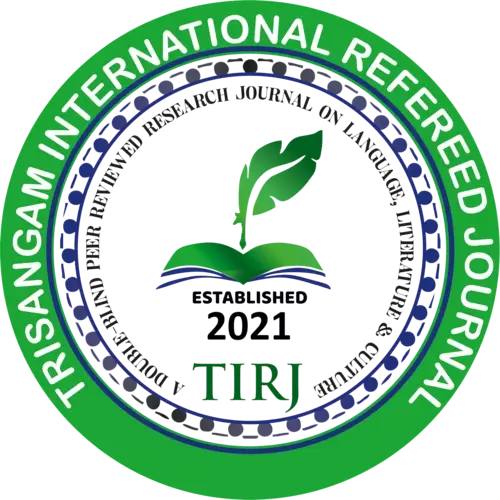Published Paper Details:
Vidyasagar’s ‘Betal Panchabinsati’ : In terms of morphology
SUDESHNA KONAR
Folklore, Fairy tale, Morphology, Structuralism, Phraseology, Word table, Translated, Bengali prose.
“Āmāra kathāṭi phurālō
Naṭē gāchaṭi murālō.”
Among other forms of folklore are folktales; And a special element of folklore is the fairy tale. A link to the nursery rhyme mentioned above can be seen in the fairy tale, which takes the child to the kingdom of kings-queens, fairies, demons, bangama - bangami. But these folk tales or fairy tales are born during the discovery of creation. They were created by humans for his entertainment as well as to keep alive his own experience and self-belief. Meaning of fairy tale means – unrealistic fictional story. But the purpose of a fairy tale is to highlight the reality hidden behind the metaphor. Fairy tales are a medium to make a complex subject simple to children. Every fairy tale has some message, which gives children an idea about the present social system. Another purpose of telling fairy tales to children is to develop their 'imaginary world'.
Although folk tales or fairy tales are mainly identified as children's books, it is undeniable that behind the story the deep theory of people’s aspirations and dreams can be seen. We continue to carry this trend of development and expansion of folk culture even today through our literature and culture. Because the perfection of creation is attained, by resorting to ancient traditions. In search of that perfection, Vidyasagar also had to go to the threshold of folk culture, he chose folk tales or fairy tales. 'Betal Panchabinshati' story book translated by Vidyasagar is chosen for this essay.
In this essay I have chosen the structure of folktales mentioned by Vladimir Propp to present selected stories from 'Betal Panchbingashti' translated by Vidyasagar. However, a quote by Ferdinand Saussure first comes up in the context of this abstract discussion. The linguist Ferdinand de Saussure, in search of an answer to the question of how language becomes meaning in speech, said –
“Language was composed of arbitrary units that were void of concept of meaning until they acquired meaning through system that relied on differences between terms within their larger linguistic and social contexts.”
[Source – Internet]
It was later applied to folklore by Vladimir Propp in his book 'Morphologia Skazki'. Which was published in 1928. Vladimir Propp's theory is called the ‘Syntagmatic Model’. Because the theory is built according to syntax. In his theory, Vladimir Propp divides the functions of folklore characters into thirty-one units, resorting to certain symbols or codes to express the functions of the characters in the fairy tale and at the same time states that two types of units can be observed in folklore – (a) variable units and (b) invariable units. In this case, although the name and place of the hero and heroine have changed, but Vladimir Propp identified their activity as an unchanging unit.
Vidyasagar's attempt to present some selected stories of 'Betal Panchabingshati' translated by Vladimir Propp through the theory of 'Syntagmatic Model'.
Journal : TRISANGAM INTERNATIONAL REFEREED JOURNAL
Paper ID : tirj/January23/article-5
Page No : 47- 68
Published In :Volume 3, Issue 1
DOI (Digital Object Identifier) :
E ISSN : 2583-0848


 .
.